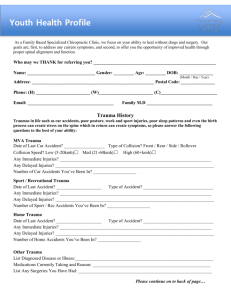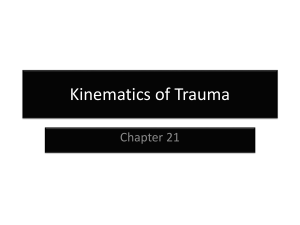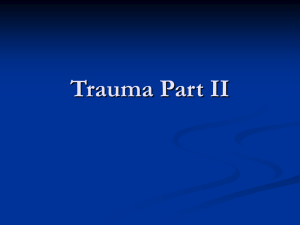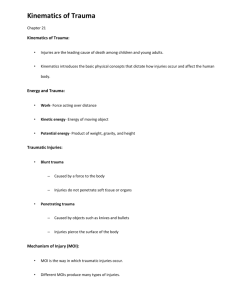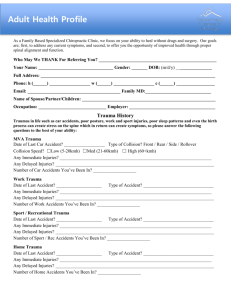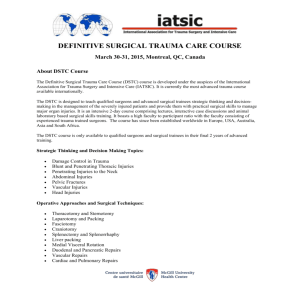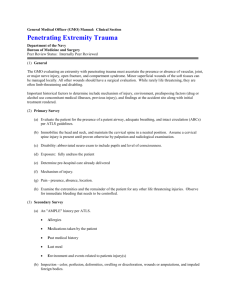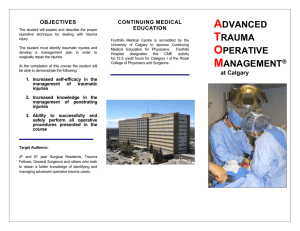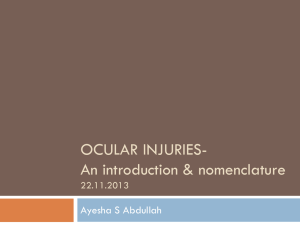Trauma - Angelfire
advertisement
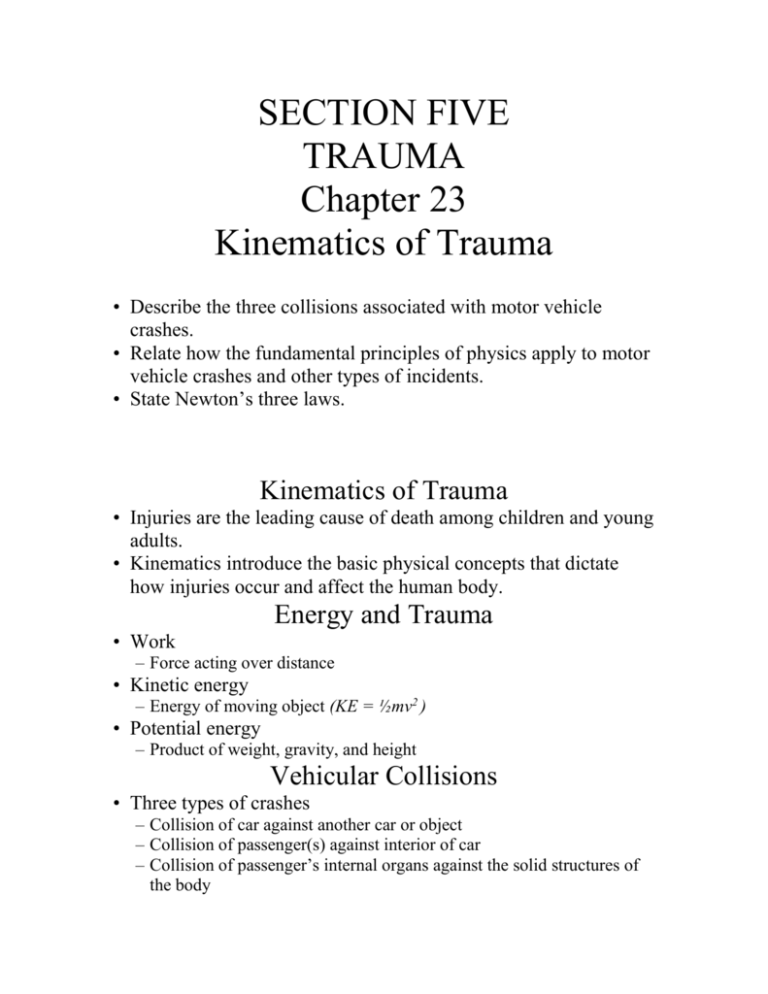
SECTION FIVE TRAUMA Chapter 23 Kinematics of Trauma • Describe the three collisions associated with motor vehicle crashes. • Relate how the fundamental principles of physics apply to motor vehicle crashes and other types of incidents. • State Newton’s three laws. Kinematics of Trauma • Injuries are the leading cause of death among children and young adults. • Kinematics introduce the basic physical concepts that dictate how injuries occur and affect the human body. Energy and Trauma • Work – Force acting over distance • Kinetic energy – Energy of moving object (KE = ½mv2 ) • Potential energy – Product of weight, gravity, and height Vehicular Collisions • Three types of crashes – Collision of car against another car or object – Collision of passenger(s) against interior of car – Collision of passenger’s internal organs against the solid structures of the body Significant Mechanisms of Injury (MOI) • Severe deformities of the frontal part of a vehicle with or without intrusion to passenger compartment • Moderate intrusion from a T-bone accident • Severe damage from the rear • Collisions in which rotation is involved Frontal Collisions • Evaluate seat belts and airbags. • Remember that supplemental restraint systems can cause injury. • Check for contact points in dash, instrument panel, and windows. • Steering wheels can also cause chest injuries, especially if no air bag is present. Rear-End Collisions • Commonly causes whiplash injuries • In unrestrained passengers, the body will be thrust forward into the dashboard and windshield. • Back seat passengers wearing only lap belts are prone to lumbar and thoracic spine injury. Lateral Collisions • Highest incident of deaths • Body is less tolerant of lateral bending. • Intrusion of a vehicle into the passenger compartment can indicate injuries to the ribs and lower extremities. • 25% of severe injuries to the aorta are a result of lateral collisions. Rollover Crashes • Injury patterns differ if patients are unrestrained. • The most unpredictable injuries are from unrestrained passengers. • Ejection is the most common life-threatening injury. Falls • Injury potential is related to the height from which the fall occurs. • A fall three times the person’s height is considered significant. • Patients landing on their feet may have less internal injuries but leg and spine injuries are likely. Considerations for Falls • The height of the fall • The surface struck • The part of the body that hit first, followed by the path of energy displacement Penetrating Trauma • Second largest cause of death after blunt trauma • Low-energy penetrating trauma results from impaled objects. • Medium and high energy penetrating trauma can cause cavitation. • Determining the entrance and exit wound can help determine internal pathway. Newton’s Laws • Objects at rest tend to stay at rest and objects in motions stay in motion, unless acted upon by some force. • Force equals mass times acceleration. • F=M x A • For every action, there is an equal and opposite reaction.

